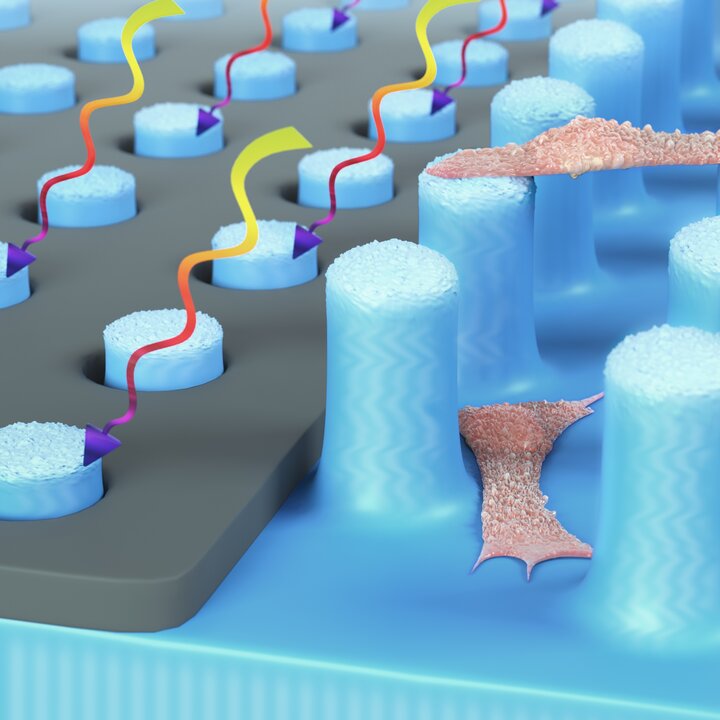
The key of research in this topic is to fabricate nanoporous materials for clean water and to develop battery free optical sensor for health, food and safety.
Nanoporous materials
Nanoporous materials are of great interest due to their applications in areas of filtration, adsorption, separation and catalysis. Due to the small pore size in these materials, discrimination between molecules and ions based on size and shape are possible, while the confined environment could enhance chemical reactions. The self-organization of liquid crystals and their polymers is very appealing for making small pores. To achieve this goal, smectic phases can be used to prepare nanoporous membranes. We are currently exploring the possible applications of these materials in the field of nanofiltration, adsorpton recovery and catalysis. Other potential application areas include regenerative medicine where carefully tailored porous scaffolds differentiate and proliferate stem cells to grow tissue and organs.
Optical Sensors
Battery-free, cheap optical sensors based on polymer cholesteric liquid crystals can be processed using high speed printing techniques. In such a way, sensors can be produced that are able to, for example, monitor the entire history of exposure of a sample (time-analyte integrators) to a wide variety of stimuli such as temperature, humidity, acetone, oxygen, and carbon dioxide. These sensors are evaluated for applications in food, personal care, medical applications and high-end consumer products. Furthermore, such systems can also be used as stimulus-responsive paints and reflectors which are explored for the architectural and building sectors.
The key of research in this topic is to fabricate nanoporous materials for clean water and to develop battery free optical sensor for health, food and safety.
Nanoporous materials
Nanoporous materials are of great interest due to their applications in areas of filtration, adsorption, separation and catalysis. Due to the small pore size in these materials, discrimination between molecules and ions based on size and shape are possible, while the confined environment could enhance chemical reactions. The self-organization of liquid crystals and their polymers is very appealing for making small pores. To achieve this goal, smectic phases can be used to prepare nanoporous membranes. We are currently exploring the possible applications of these materials in the field of nanofiltration, adsorpton recovery and catalysis. Other potential application areas include regenerative medicine where carefully tailored porous scaffolds differentiate and proliferate stem cells to grow tissue and organs.
Optical Sensors
Battery-free, cheap optical sensors based on polymer cholesteric liquid crystals can be processed using high speed printing techniques. In such a way, sensors can be produced that are able to, for example, monitor the entire history of exposure of a sample (time-analyte integrators) to a wide variety of stimuli such as temperature, humidity, acetone, oxygen, and carbon dioxide. These sensors are evaluated for applications in food, personal care, medical applications and high-end consumer products. Furthermore, such systems can also be used as stimulus-responsive paints and reflectors which are explored for the architectural and building sectors.
